1960 - 1975
Back in the day of the Beatles vocals, guitars, drums and bass were recorded on a
tape machine. And every single instrument got its own track on the tape.
The Beatles had only four tracks for their first albums!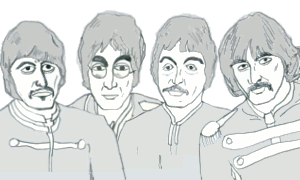
The Beatles had only four tracks for their first albums!

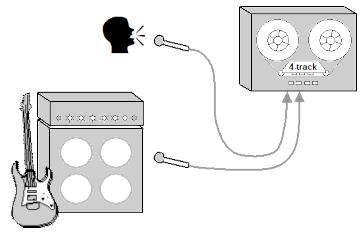
After all tracks had been recorded on the tape machine, step
two, the mixing, could be started. For step two the vocals and
all single instruments were routed from the tape machine into a mixing desk.
At the mixer the sound engineer set the volume for all single instruments. He also added effects like compression, chorus and reverb to every single track.
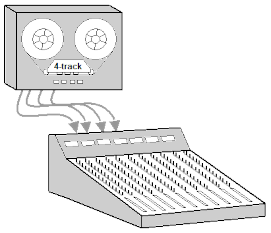
In step three the master output signal of the mixer was finally recorded on a stereo tape machine. The tape of this machine became the "master-tape" which was the ultimate base for the manufacturing of
vinyl records.

1976 - 1990
In the seventies the recording techniques became more elaborated. In these times
we had 8-track, 16-track and even 24-track tape machines.
The biggest change came with the midi-protocol. With midi it suddenly became possible to record musical data from all kinds of keyboards, including synthesizer, organs and pianos, into a personal computer. These recordings could be played in perfect synchrony with the tape machine. Using this method even very complex arrangements could be achieved.
The biggest change came with the midi-protocol. With midi it suddenly became possible to record musical data from all kinds of keyboards, including synthesizer, organs and pianos, into a personal computer. These recordings could be played in perfect synchrony with the tape machine. Using this method even very complex arrangements could be achieved.
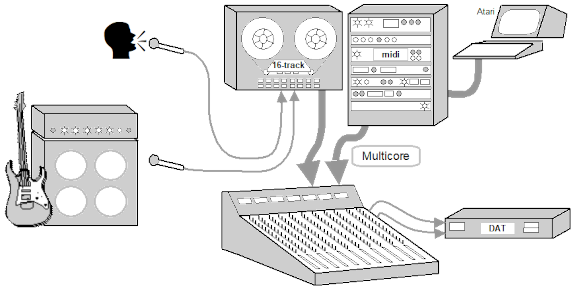
From 1985 on the final mix was
recorded digitally to a DAT-recorder. The
DAT was an enormous step in sound quality.
recorded digitally to a DAT-recorder. The
DAT was an enormous step in sound quality.
1991 - 1999
Since 1991 the sound engineer didn't record to a tape machine. Instead he
recorded singers and instrumentalists directly into a personal computer.
The PC was equipped with a soundcard and thus it could record any kind of
audio signal, convert it into a digital audio stream and store the stream on
its internal harddisc.
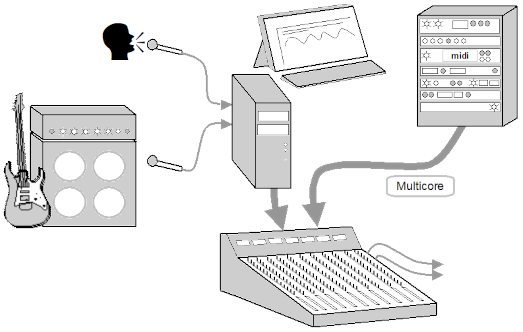
The mixing and effect settings
were still done in a big mixing desk.
were still done in a big mixing desk.
since 2000
In the millenium we saw a dramatic change: Not only the good old tape machine,
also the mixing desk and all the effect racks disappeared from the music studio.
They vanished because the software of the personal computer became more effective,
cheaper and better.
All the functions, which are the mixing desk, effect devices, synthesizer and instruments like guitar, e-piano and piano, they are all included in the PC-software. All these instruments can be played by keyboard or even by mouse. And of course they can be edited and arranged.
Today (we have 2020) a current music studio looks quite like a standard office workplace. There's just a personal computer. And only the additional hardware devices, microphones and guitar amps ... they testify that very rocky and musical things may happen.
All the functions, which are the mixing desk, effect devices, synthesizer and instruments like guitar, e-piano and piano, they are all included in the PC-software. All these instruments can be played by keyboard or even by mouse. And of course they can be edited and arranged.
Today (we have 2020) a current music studio looks quite like a standard office workplace. There's just a personal computer. And only the additional hardware devices, microphones and guitar amps ... they testify that very rocky and musical things may happen.
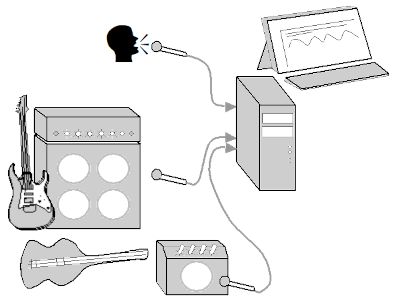
DAW is an abbreviation for "Digital Audio Workstation".